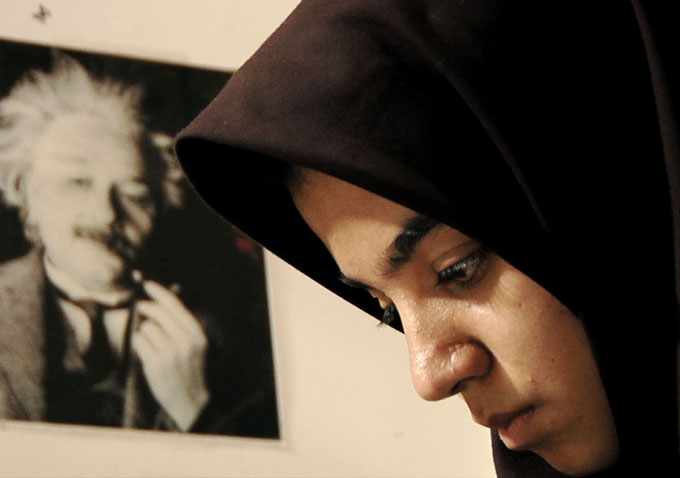
There seems to be a minor theme emerging in certain circles of documentary filmmaking recently, of women making films about young girls doing remarkable things (maybe this is just because I just reviewed “Maidentrip,” but clearly it’s on the brain in one way or another). This is a good thing. The stories of these inspiring young women illustrate for us why feminism is needed, what it has already done to pave the way for these girls to dream big, and the possibilities that are contained within their unrestrained ambition. It’s exhilarating, frankly. The documentary, “Sepideh—Reaching For the Stars,” is an example of why capturing these dreams, and the continued struggles that young women in the world face for simply having dreams, is an important locus for documentary filmmaking.

The film is a portrait of a young Iranian woman with an otherworldly passion for astronomy. Sepideh is a very serious young woman, but she’s also very emotional. She weeps at videos of Iranian astronaut Anousheh Ansari, lugs telescopes around with her friends, and diligently studies star maps and constellations. She is determined to become an astronaut, and is supported by her kind yet prickly teacher Mr. Kabiri. Sepideh comes from a very traditional family, and her father died when she was young. Her mother, though quietly supportive of her daughter’s studies, struggles with money and tells Sepideh frankly that she can’t afford to send her to university. She tries to rely on Sepideh’s uncles for guidance in raising the girl, but they refuse to help the family in any real way.
‘Sepideh’ tells an important story, but it doesn’t make it easy on viewers. Director Berit Madsen is a social anthropologist, and her film is imbued with this ethos of observing but not interfering. The style is largely observational, without any address to the camera or filmmaking process itself, the only acknowledged cinematic construction a series of letters addressed to Albert Einstein as read by Sepideh in voice-over. The film manages to weave together a narrative out of the quiet observations of Sepideh’s life (over several years? It’s not clear), but the problem with this kind of filmmaking, which doesn’t address the cinematic apparatus or process as a presence in the lives of these people, is that it presumes an authenticity that may not be so. There are some baldly dramatic and shocking moments—when Sepideh’s uncle flatly threatens to kill her if she does something wrong while out observing the stars late at night, it’s stomach-turning, and illustrative of the forces that she’s up against in just wanting to study astronomy. However, what influence might the presence of the camera might have had on this moment? Is it performative? Is he toning it down? The film doesn’t give us the chance to understand that, and while it reads as real, the authenticity of moments like this is murky.

‘Sepideh’ doesn’t offer a lot of guidance to the audience in terms of laying out why this is an important story; that is something that must be unwrapped and revealed throughout the meditative and thoughtful narrative. We see Sepideh’s emotion, the obstacles she faces, and we are happy for her during moments of joy or achievement. It’s not a pushy documentary, and because of this it sacrifices some of the flash and storytelling manipulation that makes other docs more compelling. The film is really a reflection of Sepideh’s personality herself: serious, thoughtful, quietly determined. Her story is reflective of the young woman’s experience on a global level in many ways: balancing obligations and desires, expectations and dreams. Sepideh’s story is very personal and very specific, but in the DNA, her story is every woman’s story. [B]
Browse through all our coverage of the 2014 Sundance Film Festival by clicking here.

